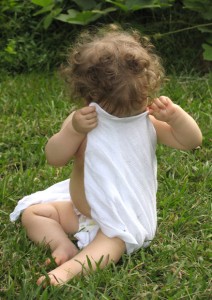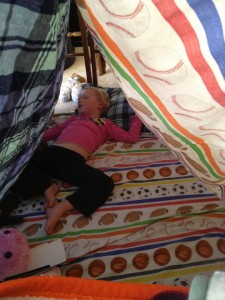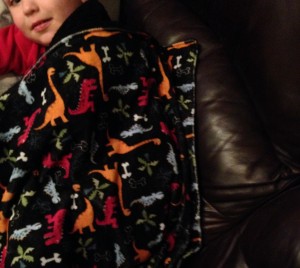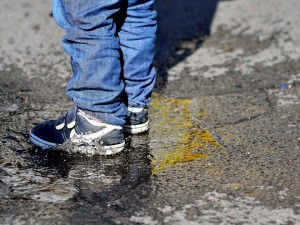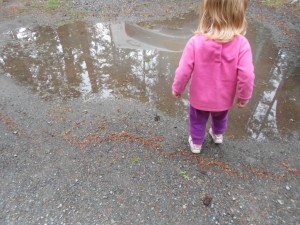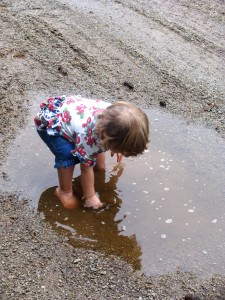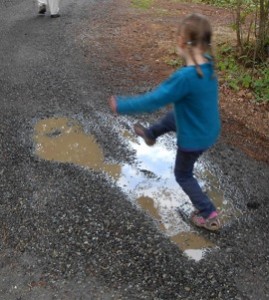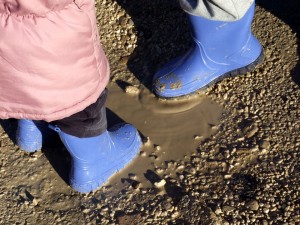While there are wonderful costumes and dress-up clothes available to buy, kids will also play with old clothes. Dress-up play is a timeless favorite.
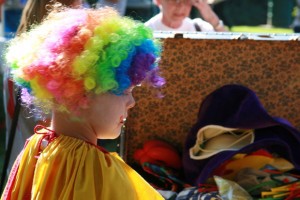 Figuring out ourselves and other people is a challenge, not just for kids but for grownups too. When kids put on clothes or costumes they don’t usually wear, they are also putting on a new person. They are seeing the world from a different point-of-view, from inside someone else. This is part of empathy and of relating to others. Not only are kids aware of other people, they are trying to be them.
Figuring out ourselves and other people is a challenge, not just for kids but for grownups too. When kids put on clothes or costumes they don’t usually wear, they are also putting on a new person. They are seeing the world from a different point-of-view, from inside someone else. This is part of empathy and of relating to others. Not only are kids aware of other people, they are trying to be them.
Kids don’t need magic wands to transform themselves into superheroes, warriors, pirates, princes, princesses, fairies, monsters, firefighters, or anything else. They only need a box of dress-up clothes. These can be pre-made costumes but they can also be worn out t-shirts, old dresses, jackets, shoes, and even towels. A few accessories like a long paper tube to be a sword or lightsaber, a small bag of bottle caps as coins and jewels, or old socks with the toes cut off to be wristbands of power, add to the play.
Kids may also dress up and pretend to be the other gender. It’s not unusual for boys to dress up as a girl, and for girls to dress up as boys. This sometimes alarms adults but according to Children’s Services Coordinator, Greg Uba, at Connections for Children,
“When children are allowed to play out side their roles, it gives them the opportunity to go beyond gender bias. Crossover play allows them to develop skills they traditionally aren’t encouraged to develop.” (A Place of Our Own: Cross-over Play)
Kids need to explore their own abilities and emotions. They try out what it feels like to be strong and powerful as well as to be caring and of service to others. Dress-up play supports the development of social and emotional skills, problem-solving, visualizing, complex language, and more.
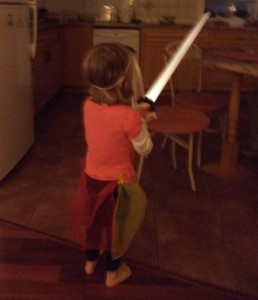 Sort thru the closets at your house to find items for dress-up play. There’s nothing old hat about dress-up play, is there?
Sort thru the closets at your house to find items for dress-up play. There’s nothing old hat about dress-up play, is there?

